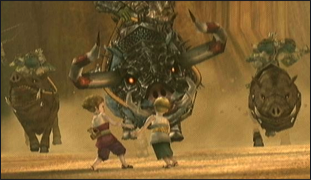The Legend of Zelda: The Hero’s Journey in Gaming
Posted on February 10 2012 by Legacy Staff
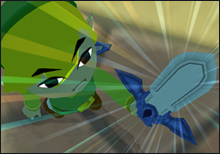 The Legend of Zelda has a long history of story-driven gaming, to the point where an official timeline release has been highly controversial. While in many cases this emphasis on story is praised by the gaming media, the games have attracted a fair bit of criticism for each having the same basic story – and the criticism is right.
The Legend of Zelda has a long history of story-driven gaming, to the point where an official timeline release has been highly controversial. While in many cases this emphasis on story is praised by the gaming media, the games have attracted a fair bit of criticism for each having the same basic story – and the criticism is right.
The key point here is that this is not necessarily a criticism: The Legend of Zelda ascribes very closely to a literary theory known as the monomyth, or “hero’s journey.” Many great works of storied art follow this outline, from literary classics such as the Aeneid and Heart of Darkness to modern pop culture phenomena such as Star Wars and The Lord of the Rings. As a series that has long been one of the signatures of high fantasy gaming, it’s not surprising that The Legend of Zelda should follow this outline.
Three games in particular – Ocarina of Time, The Wind Waker, and Twilight Princess – fit this pattern exceptionally well. First, let’s look at the monomyth itself.
The monomyth can be divided into a few basic stages. There are numerous models used by literary critics, but the one I will be using is divided into six stages: call to adventure, crossing the threshold, challenges and temptations, the abyss (death and rebirth), transformation and atonement, and the return. The call to adventure is what is sounds like: something disrupts the status quo of the hero’s situation that invites him to venture forth. Crossing the threshold is a point in the journey where the hero crosses from the known into the unknown. In the unknown, he will encounter challenges and temptations on the way the resolution of his journey. At some point, there will be a plunge into the abyss, which is accompanied with death and rebirth – this can be literal or metaphorical. Following the rebirth, the hero is transformed and atones for any mistakes or crimes, leading up to his triumphant return and the end of the journey.
We’ll be looking at Ocarina of Time, The Wind Waker, and Twilight Princess, and for the sake of comparison, we’ll break the monomyth down by stage and discuss all three games at once.
Call to Adventure, part 1: Call
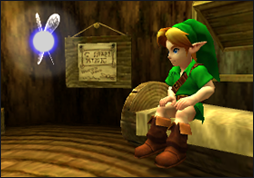 We almost always start the game with Link waking up. In each of these three cases, Link lives in a small idyllic village far removed from bustling city life – compare Kokiri Forest to Castle Town, Faron Woods to Castle Town, and Outset to Windfall – and is always a small town boy with little contact with the world at large. In Ocarina of Time, this idyllic existence is quickly disrupted with the call to adventure arriving in the form of Navi awakening and then summoning Link to the Great Deku Tree. Link goes to the Tree as requested, and is then tasked with ending the curse placed on him by Ganondorf. After Link is successful, he is told to take the Kokiri Emerald to Princess Zelda in Hyrule Castle.
We almost always start the game with Link waking up. In each of these three cases, Link lives in a small idyllic village far removed from bustling city life – compare Kokiri Forest to Castle Town, Faron Woods to Castle Town, and Outset to Windfall – and is always a small town boy with little contact with the world at large. In Ocarina of Time, this idyllic existence is quickly disrupted with the call to adventure arriving in the form of Navi awakening and then summoning Link to the Great Deku Tree. Link goes to the Tree as requested, and is then tasked with ending the curse placed on him by Ganondorf. After Link is successful, he is told to take the Kokiri Emerald to Princess Zelda in Hyrule Castle.
In The Wind Waker, the call to adventure arrives after the Helmaroc King flies over Outset Island and drops Tetra over the forest. Link goes to rescue her, only for the Helmaroc King to arrive and whisk Aryll, his sister, away instead. Vowing to rescue his sister, Link charters a voyage with the pirates to the Forsaken Fortress.
Twilight Princess takes a bit longer to call Link to adventure. Only after completing a few objectives around Ordon Village does the adventure present itself, this time in the form of the Bulblins and the Twilight arriving at Ordon Spring. Link is turned into a wolf in the Twilight and is taken to Hyrule Castle, where Midna helps him escape. He returns to Ordon to find that all of the kids were taken by the riders. Taking a sword and shield, he sets off to rescue them with Midna’s help.
Call to Adventure, part 2: Loss
One of the most critical parts of the call to adventure – at least in so far as how it affects the character – is that they lose something. Every great adventure is motivated by the loss of something near and dear to the hero, and that loss effects a significant change in mentality. In a sense, the loss is the call to adventure – there may be an adventure waiting, but it’s the loss and the subsequent change in mentality that drive the hero to move forward.
In Ocarina of Time, Link loses the guardian spirit of his forest, the Great Deku Tree. This loss had to be particularly affecting to the young hero given his valiant efforts to save the spirit by ending the curse within him. Indeed, the effects of this loss are seen as soon as Link returns to the Kokiri village proper: Mido scolds him as he walks out, and the rest of the Kokiri all watch Link with concern. A balance has been shaken.
In The Wind Waker, a lot of setup is devoted to the relationship between Link and his sister, Aryll. The loss in this game is, appropriately, the loss of his sister, who is kidnapped by the Helmaroc King. Immediately, Link’s mentality changes; whereas he had previously been a somewhat confused child who looked puzzled and often had things explained to him before he acted, here he leaps off the cliff after Aryll without a second thought. The Wind Waker’s art style is wonderfully expressive, and the manic look in Link’s eyes as he struggles to break free from Tetra’s hold so he can run after Aryll is more telling than anything else could ever be.
Twilight Princess has a much larger loss that affects far more people. Here, Link loses every child in Ordon Village. It was clear from the game’s tutorial stages that Link shared a significant connection with the children, as he teaches them to use a sword and a slingshot and is clearly an object of admiration for them. In addition, there are hints of a romantic connection between Link and the mayor’s daughter, Ilia. The loss of all of these children weighs heavily on Link, who is unfortunately unable to express this grief until considerably later due to the unfortunate circumstance of his lupine form. Nevertheless, it is very painful for the player to watch helplessly as the parents in the village mourn and try to rescue their kidnapped children.
Link is always tasked with something tangentially related to the eventual full plot of the game – in The Wind Waker and Twilight Princess, it is something as simple as rescuing a loved one. Ocarina of Time’s call is a bit more relevant to the ultimate goal, but boils down to a simple delivery errand. In all three cases, the motivation by loss is quite strong, though more so in The Wind Waker and Twilight Princess – the concept of rescuing loved ones in distress is a stronger motivator than fulfilling a dying request. Nevertheless, these losses are the impetus for Link’s transformation over the course of the game into the legendary hero, even if his errand is not legendary at the outset. After all, it’s not until the threshold that the games take on a larger importance.
Threshold
The hero almost always encounters a person who expands their initial errand. In Zelda, this holds true. In Ocarina of Time, Link delivers the Emerald to Zelda, who then explains her vision and her distrust of Ganondorf to Link, and asks him to collect the remaining two Spiritual Stones – suddenly, Link’s errand has expanded into a Hyrule-spanning adventure.
The Wind Waker has a more violent threshold crossing, with Link being thrown out of the Forsaken Fortress after being captured by the Helmaroc King (and after being so close to rescuing Aryll and completing his journey). He is then picked up by the King of Red Lions, who explains the situation to Link and asks for his aid in gathering the three Goddess Pearls – again, expanding into a wider scale task.
Twilight Princess is, again, the anomaly. Whereas the previous games’ thresholds coincided with the completion of their first task, in the case of Twilight Princess, the threshold occurs much earlier, when Link restores light to Faron Woods as part of his efforts to find the kidnapped children. In doing, Link reawakens the light spirit, Faron, who reveals more critical information that Midna was holding back from him – namely, the necessity of restoring light to Hyrule and securing the “dark power” in the dungeons starting with the Forest Temple. While his initial goal isn’t yet complete, Link now has an additional goal and is far outside the known world by this point.
 It’s no coincidence that the threshold occurs at the point in each game where the world “opens up”, in a way, and the training wheels are cast off – you’re free! You can explore the world to your heart’s content and delve deep into the unknown. The thematic fit is appropriate, given that the threshold is the point in the story where the major obstacles are revealed and the story really begins to take shape. As Link plunges head first into the unknown, the player is allowed to explore the unknown as well.
It’s no coincidence that the threshold occurs at the point in each game where the world “opens up”, in a way, and the training wheels are cast off – you’re free! You can explore the world to your heart’s content and delve deep into the unknown. The thematic fit is appropriate, given that the threshold is the point in the story where the major obstacles are revealed and the story really begins to take shape. As Link plunges head first into the unknown, the player is allowed to explore the unknown as well.
Interestingly, The Wind Waker takes a far more pessimistic approach to the threshold. While the thresholds of Ocarina of Time and Twilight Princess both center on the successful completion of Link’s immediate errand, The Wind Waker centers on that errand’s failure. The errand expands in Ocarina of Time and Twilight Princess, while in The Wind Waker it proves insurmountable without additional knowledge and equipment. This makes Link’s ultimate rescue of Aryll in The Wind Waker far more affecting both on a player and character level – repeated failures followed by success is considerably more satisfying than incremental successes. It also makes the Link in The Wind Waker a more resilient, courageous one than the ones in Twilight Princess and Ocarina of Time – this Link is one constantly beset by failure, but he keeps going. It’s an interesting difference in philosophy that results in slightly different character growth, but the same result.
Challenges and Temptations
In Nintendo’s E-rated pedigree, the conventional idea of temptations don’t exactly occur in the Zelda series. Typically, temptations refer to external influences that try to make the hero stray from his path. Since the Zelda series is typically very focused plotwise, there are rarely if ever significant temptations that Link faces. Challenges, however, play right into the series’ style.
In Ocarina of Time, Link gathers the remaining two Spiritual Stones by ending the curses Ganondorf placed on Dodongo’s Cavern and Lord Jabu-Jabu. In addition to this, Link has to complete several tasks for the Gorons and the Zora respectively before gaining the ability or permission to enter the dungeons. It’s a large section of the plot where development comes slowly, and most of what is seen is setup for later revelation – as it should be.
In The Wind Waker, the challenges Link faces are similar – he must retrieve the three Goddess Pearls (one from Dragon Roost Island, one from the Forest Haven, and the third from Jabun), and then traverse the Tower of the Gods to prove his worth.
Twilight Princess – unsurprisingly – also uses almost the exact same structure for this segment, with Link traversing the Forest Temple, Goron Mines, and Lakebed Temple to find the three pieces of the Fused Shadow, as well as restoring light to the three provinces in the process.
This leg of the journey is where the Zelda series tends to fulfill the notorious Rule of Three – three Spiritual Stones, three Goddess Pearls, three pieces of the Fused Shadow. This rule exists within literature as well, though it usually has a slightly different function. In the Legend of Zelda, it applies to three “MacGuffins” that Link must obtain to advance the plot, whereas in literature it usually refers to three attempts by the protagonist to resolve the conflict, the first two of which fail. Zelda co-opts this rule for its own purposes, and it is always used as the “challenges” part of the monomyth.
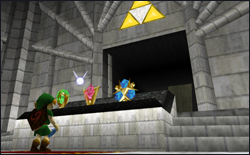 Additionally, the first three dungeons in each case mirror the three parts of the Triforce, and grow one aspect of Link at a time. The first dungeon is almost always puzzle-light and combat-light, and is more of an introductory dungeon to ease players into the formula, while also testing and enhancing Link’s courage. The second is typically more combat intensive, with enemies such as Lizalfos in Dodongo Cavern and Dodongos in both Dodongo Cavern and the Goron Mines. This dungeon tests and increases Link’s power. The third dungeon is historically a step up in terms of puzzle challenge – the Lakebed Temple and its rotating central room, the Tower of the Gods and its use of the Command Melody, and Inside Jabu-Jabu’s Belly and its dizzying floor plan and excess of tentacles. These naturally test and augment Link’s wisdom. The idea of the first three dungeons testing Link in the three parts of the Triforce, slowly growing him into the legendary hero that he is destined to become, fits perfectly with the literary traditions of the monomyth. Link is slowly being transformed into a hero from humble beginnings.
Additionally, the first three dungeons in each case mirror the three parts of the Triforce, and grow one aspect of Link at a time. The first dungeon is almost always puzzle-light and combat-light, and is more of an introductory dungeon to ease players into the formula, while also testing and enhancing Link’s courage. The second is typically more combat intensive, with enemies such as Lizalfos in Dodongo Cavern and Dodongos in both Dodongo Cavern and the Goron Mines. This dungeon tests and increases Link’s power. The third dungeon is historically a step up in terms of puzzle challenge – the Lakebed Temple and its rotating central room, the Tower of the Gods and its use of the Command Melody, and Inside Jabu-Jabu’s Belly and its dizzying floor plan and excess of tentacles. These naturally test and augment Link’s wisdom. The idea of the first three dungeons testing Link in the three parts of the Triforce, slowly growing him into the legendary hero that he is destined to become, fits perfectly with the literary traditions of the monomyth. Link is slowly being transformed into a hero from humble beginnings.
The Abyss (death and return)
The abyss does not necessarily constitute literal death – Link doesn’t actually die in any of the games to date, after all – but rather a symbolic death, followed by an equally symbolic rebirth, usually accompanied with the acquisition of new abilities. In literary tradition, it usually refers to a literal descent into the Underworld, as in the Aeneid. In the Legend of Zelda, however, the abyss is usually a critical oversight in Link’s plans that allows the villain to gain the upper hand, if only temporarily, and maneuver themselves into a position of greater power.
In Ocarina of Time, this occurs when Link returns the Spiritual Stones to Zelda. Before he can get to the castle gates, Zelda and Impa run by on horseback, tossing the Ocarina of Time behind them, just as Ganondorf steps out and taunts Link. Returning the Stones to the Temple of Time, Link opens the Door of Time and draws the Master Sword, allowing Ganondorf access to the Sacred Realm and the Triforce. When Link emerges seven years later, the world outside has taken on the appearance of a sort of underworld in a more straightforward version of the tradition.
The Wind Waker’s plunge into the abyss is more drawn out. After proving himself in the Tower of the Gods, Link and the King of Red Lions return to Hyrule beneath the sea. There, Link draws the Master Sword out of a pedestal in Hyrule Castle, restoring color and, presumably, life, to the world around him, including several of Ganon’s minions. After dispatching them and returning to the Forsaken Fortress, Link confronts Ganon with the Master Sword in hand. This proves slightly disastrous, however, as the blade has been dulled due to the death of the Earth and Wind sages. Further, the drawing of the blade restored Ganon’s full powers, and Link and Tetra’s presence in his chamber alerted him to the location of the Triforce of Wisdom, playing straight into his plans. Fortunately, before Ganon can do anything too terrible, the Rito and Valoo appear and whisk Link and Tetra to safety.
Twilight Princess is similar, but has one key difference. After obtaining the Fused Shadow from the Lakebed Temple, Link is returned to Lanayru’s spring, where the Twilight King Zant is waiting for him. Zant takes the Fused Shadows, drains Midna, and implants a Twilight Splinter in Link, permanently trapping him in wolf form. Link and Midna rush to Princess Zelda, who gives her vitality to restore Midna to health. The pair then travel to the Sacred Grove, where Link draws the Master Sword, breaking the curse on himself and allowing him to use the Twilight Splinter to return to wolf form at will.
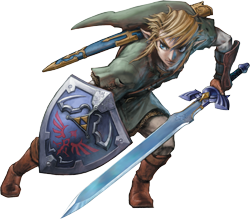 The common link in the abyss of each of the three games is the Master Sword, but it plays a different role in each one. In Ocarina of Time, it acts as an instrument of death, where Link is put into sleep for seven years – his symbolic death – allowing Ganondorf to take over. In Twilight Princess, it acts as a tool of rebirth, breaking the curse on Link that constituted his symbolic death. In The Wind Waker, it acts as both, being both Link’s hope to defeat Ganon as well as the key that locked away the Evil King’s full power (and subsequently returned it to him upon removal from the pedestal). As an enduring symbol of the franchise, seeing the Master Sword play very different roles in each of these three games is rather eye-opening, since at face value it always plays the same role.
The common link in the abyss of each of the three games is the Master Sword, but it plays a different role in each one. In Ocarina of Time, it acts as an instrument of death, where Link is put into sleep for seven years – his symbolic death – allowing Ganondorf to take over. In Twilight Princess, it acts as a tool of rebirth, breaking the curse on Link that constituted his symbolic death. In The Wind Waker, it acts as both, being both Link’s hope to defeat Ganon as well as the key that locked away the Evil King’s full power (and subsequently returned it to him upon removal from the pedestal). As an enduring symbol of the franchise, seeing the Master Sword play very different roles in each of these three games is rather eye-opening, since at face value it always plays the same role.
Transformation and Atonement
Before moving on, there is one more aspect of the abyss that needs to be discussed – the symbolic death, even though followed with a symbolic rebirth, always leaves a lasting mark for which the hero must atone. Since Link’s symbolic death in each of the three games is a result of an unforeseeable, but still critical, error in judgment, these losses are on his hands and he must atone for them. In Ocarina of Time, this mark is the corruption of the Sacred Realm and the splitting of the Triforce. In The Wind Waker, this mark is the unchaining of Ganon’s full power, as well as the opening of a passage to Hyrule that Ganon will later use to his advantage. In Twilight Princess, this mark is Zelda’s sacrifice. In this segment, Link will have to atone for these losses while simultaneously dealing with their effects.
Link’s atonement in Ocarina of Time is the awakening of the sages. As a result of Ganondorf’s newfound powers, the Temples scattered around Hyrule that would awaken the sages in their time of need are cursed, with the siren call issued to the sages silenced by the curse. Link travels to the Forest, Fire, Water, Shadow and Spirit Temples, awakening the five sages (Rauru, the sixth, was already awakened in the Temple of Light) and gaining the six Spirit Medallions. With the Six Sages awakened, Ganondorf can be defeated.
In The Wind Waker, Link’s atonement takes on a slightly more literal form. He too must awaken sages, this time the Earth and Wind sages, by ending the curse on the temples in the Great Sea. In addition, however, he must collect the scattered pieces of the Triforce of Courage in order to prove himself worthy of reentering Hyrule – despite already having proven himself in the Tower of the Gods.
Twilight Princess sees Link atoning for his mistake by gathering the four pieces of the Mirror of Twilight from the Arbiter’s Grounds, the Snowpeak Ruins, the Temple of Time, and the City in the Sky. After doing so, the Mirror is restored, and Link is able to defeat the Usurper King, Zant, in the Palace of Twilight. It turns out that Zant was just Ganondorf’s puppet, however, so Link’s journey is not yet complete.
The end of this segment marks the end of the “unknown” portion of the monomyth; in the next segment, the hero returns to the known and ends his journey. Appropriately, all of the major revelations in the game are resolved at this point – Sheik is revealed to be Zelda in Ocarina of Time and Ganondorf is revealed to be the puppet master in Twilight Princess (the major revelations of Tetra’s identity as Zelda and the King of Red Lions as Daphnes Nohansen Hyrule occur earlier on in The Wind Waker).
Everything is known at this point – all that is left is to finish the journey.
The Return
The return is exactly the same for all three games: defeat Ganondorf. The differences lie in his final fate: Ocarina of Time sees him sealed in the Sacred Realm, The Wind Waker sees him killed with the Master Sword lodged in his forehead, and Twilight Princess sees his fate left somewhat ambiguous (though the consensus is that he dies there, too).
With the journey resolved, the hero has ideally learned something or changed somehow. In Ocarina of Time, Link has aged a lifetime in seven years. Zelda returning him to his own time, as things were at the beginning of the game, does not last, however; Link, changed forever by the events of the game, goes off in search of Navi, leading to the events of Majora’s Mask. In The Wind Waker, Link has also aged, but rather than taking the route of the Hero of Time and returning back to things as they were, he resolves to set off on future adventures, seeking a land of his own with Tetra. Twilight Princess ends similarly, with Link riding Epona away from Ordon, carrying only his shield.
The trials of his adventure that groomed him into the legendary hero – be it the Hero of Time, the Hero of Winds, or the Hero Chosen by the Gods – have left an indelible mark upon him – an unending thirst for adventure, an inability to return to the way things once were. And isn’t that the very core of the Legend of Zelda? There is always another story to be told, even if it’s the same one that has been told several times before. The true legend of Zelda is the hero’s journey – a boy in green, facing impossible odds, conquering these odds, and moving on to another adventure, another day.



